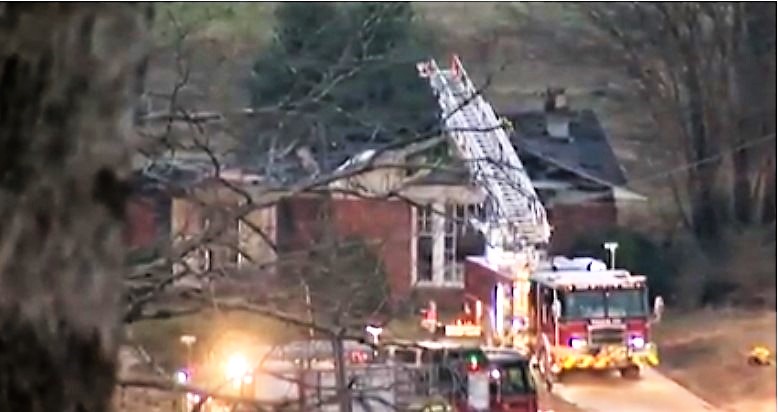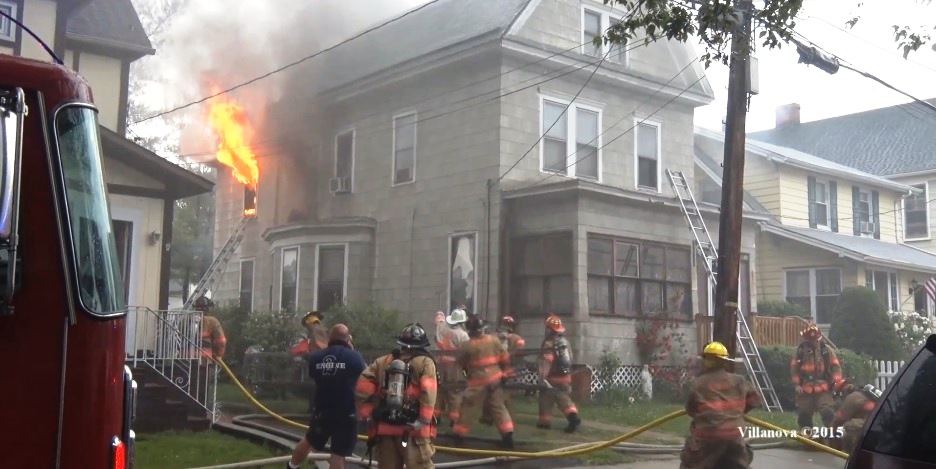Who to believe: Judge in Rhode Island & professor in Georgia come to different conclusions about a connection between safety & firefighter staffing.
Woonsocket Fire Department in action at a six-alarm mill fire in February. Video from ProvidenceFireVideos.com.
It is interesting how two different news stories that came across my computer screen today show opposite conclusions on the same issue. One story is about the ruling of a judge in Rhode Island who found no connection between the safety of firefighters and the browning out of Woonsocket Fire Department's Ladder 1. The other is a study by the University of Georgia that discovered under-resourcing is among the four major causes of firefighter fatalities.
In Rhode Island, IAFF Local 732 had taken the city of Woonsocket to court over the closing of the ladder truck when a shift had fewer than 26 firefighters. The case ran on for more than two-months. Here are excerpts from the article by Andrew Metcalf at the Woonsocket Patch:
Superior Court Judge Bennett R. Gallo ruled that there was no public safety risk to firefighters or residents in Woonsocket as a result of the removal of Ladder Truck 1 and the reduction of the minimum amount of firefighters on duty from 26 to 23 on Wednesday afternoon.
"On the evidence presented,” said Gallo, “I’m unable to discern any measurable decrease in the firefighting capabilities of the Woonsocket Fire Department or any increase risk to the firefighters of Woonsocket or to the public regarding,” the removal of Ladder 1 and the reduction in manpower.
Daniel Kinder, the primary lawyer for the city, stated in his closing remarks that the experience of the past three months proved that safety was not a concern. He said that since the policy to remove Ladder 1 from service whenever less than 26 firefighters reported for duty was implemented on January 30, there has been no firefighter injuries, no change in firefighter response times, no harm to the public and no harm to any mutual aid firefighter.
In Georgia, what is being called a comprehensive UGA study, has revealed patterns in firefighter fatalities. According to a press release from UGA, "Researchers in the UGA College of Public Health found that cultural factors in the work environment that promote getting the job done as quickly as possible with whatever resources available lead to an increase in line-of-duty firefighter fatalities."
The four major causes identified in the study are "under-resourcing, inadequate preparation for adverse events during operations, incomplete adoption of incident command procedures and sub-optimal personnel readiness."
Here is what the release said about under-resourcing:
Many of the recommendations can be traced to a lack of finances, said (co-author David) DeJoy. Not only does under-resourcing affect the ability of a fire department to acquire innovative technology, it can lead to a shortage of personnel at a fire, compromising rapid intervention and the ability to maintain command and control functions during operations, he said.
The study is published in the May edition of of the journal Accident Analysis and Prevention. It examined data gathered from 189 NIOSH firefighter fatality investigations for five years beginning in 2004.
So who are you going to believe, the judge or the professor?






